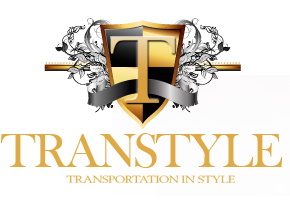Finding & Keeping Great Drivers
Transtyle’s success and growth over the past 24 years can be attributed, in large part, to its drivers. It’s a position that is the lifeblood of any thriving transportation provider. Sadeghi attributes the company’s early development to finding and keeping quality drivers.
“I have found good drivers are always available. It’s just a matter of attracting them to your company. Like everybody, drivers are looking for a better way of life,” he said. “While on the road for long periods of time, drivers are constantly seeing vehicles of other companies, such as trucking and motorcoach equipment, with large logos on their sides. Drivers notice this, and often have opportunities to talk with fellow drivers from these companies. They ask about pay, benefits, how they are treated by a specific company, etc.
“It’s therefore important to have your vehicles look nice, clean and feature your phone number — all in an effort to not only attract customers, but good drivers as well. We find a lot of good people through recommendations from our drivers.”
Once hired, Sadeghi said proper pay/benefits, training and a genuine interest exhibited by company officials are all important to keeping quality drivers.
“We try to foster a family atmosphere at our company, and recognize personal achievement as well as achievement from a team perspective. Drivers are often under a lot of pressure. It’s important that the company they work for tries to relieve that pressure. It’s important to listen to their concerns and provide support,” he said. “If a driver on the road calls us at 2 a.m. for something, he/she will have somebody at Transtyle available to talk to and help.
“It’s essential to truly understand what your drivers go through on a daily basis. Transportation company owners must constantly ask themselves, ‘Do we have a good enough business to attract the best drivers?’”
When looking at driver candidates, Transtyle officials focus on experience, attitude and customer service.
“We want drivers who are willing to do more than just the bare minimum. We want them to engage with customers and make the ride more enjoyable,” he said. “Training, knowledge and communication are all very important aspects when it comes to driving. We also pay our drivers as they are being trained. I have found that this provides extra incentive when they are going through the training process.”
There are three main phases in the Transtyle driver training program. This involves safety and vehicle maintenance, customer service and satisfaction, and continuing education that keeps established drivers informed about trends and changing policies.
“Things change on a daily bases, such as with DOT rules. It’s therefore good to keep existing drivers up-to-speed,” Sadeghi said. “It’s important to remember that many veteran drivers can forget basic driving rules of the road. For example, there may be a 30-year veteran driver who does not remember the proper driving distance between a bus and an ambulance. He/she may also forget that going just 1 m.p.h. over the speed limit in a school zone can result in a $400 ticket. This is why continuing education is so important.”
Sadeghi added that veteran drivers who start working for a new company also must be retrained if they have never driven a specific brand of equipment.
“For example, we have hired drivers who have never driven a Setra motorcoach. They must be educated on the nuances of a Setra. Every type of motorcoach is a little different,” he explained.
Sadeghi shared an example of how one of his drivers, while on the road, “saved the day” after being well trained and versed on how to handle a specific situation. During a trip to Death Valley, the Transtyle driver found that the vehicle he was operating would not go into gear after being parked at a tourist destination. The outside temperature at this stop was 122 degrees, and there were 56 passengers on the trip.
“The driver immediately called our office. We began thinking at once the best way to safely get those 56 people to a secure location. We dispatched another driver to the Death Valley site in anticipation of picking up these passengers. In the meantime, the driver called a specific 800 number for technical support and began talking to an expert about this situation. The expert told the driver to check a certain sensor, which turned out to be faulty. The driver was able to take care of the problem with the help of the expert on the phone, and the vehicle was operational again. The passengers were able to continue their trip. The recently dispatched vehicle was not needed,” Sadeghi said. “This shows how a knowledgeable and well-trained driver can take care of a situation and properly look after passengers.
“It also shows that if you take care of your drivers, they will take care of your customers.”
Part of Transtyle’s driver training focuses on today’s crackdown against excessive idling. For example, in California, a transportation provider can be fined $1,000 for excessive idling.
“There is no need to leave a vehicle running for a long period while waiting on people to board. It also saves fuel to shut that vehicle down. Fortunately, our Setras cool down fast for passengers once they are started, even in hot Arizona conditions,” Sadeghi said.
Transtyle provides monetary incentives for its drivers to help reduce idling times while on a trip.

